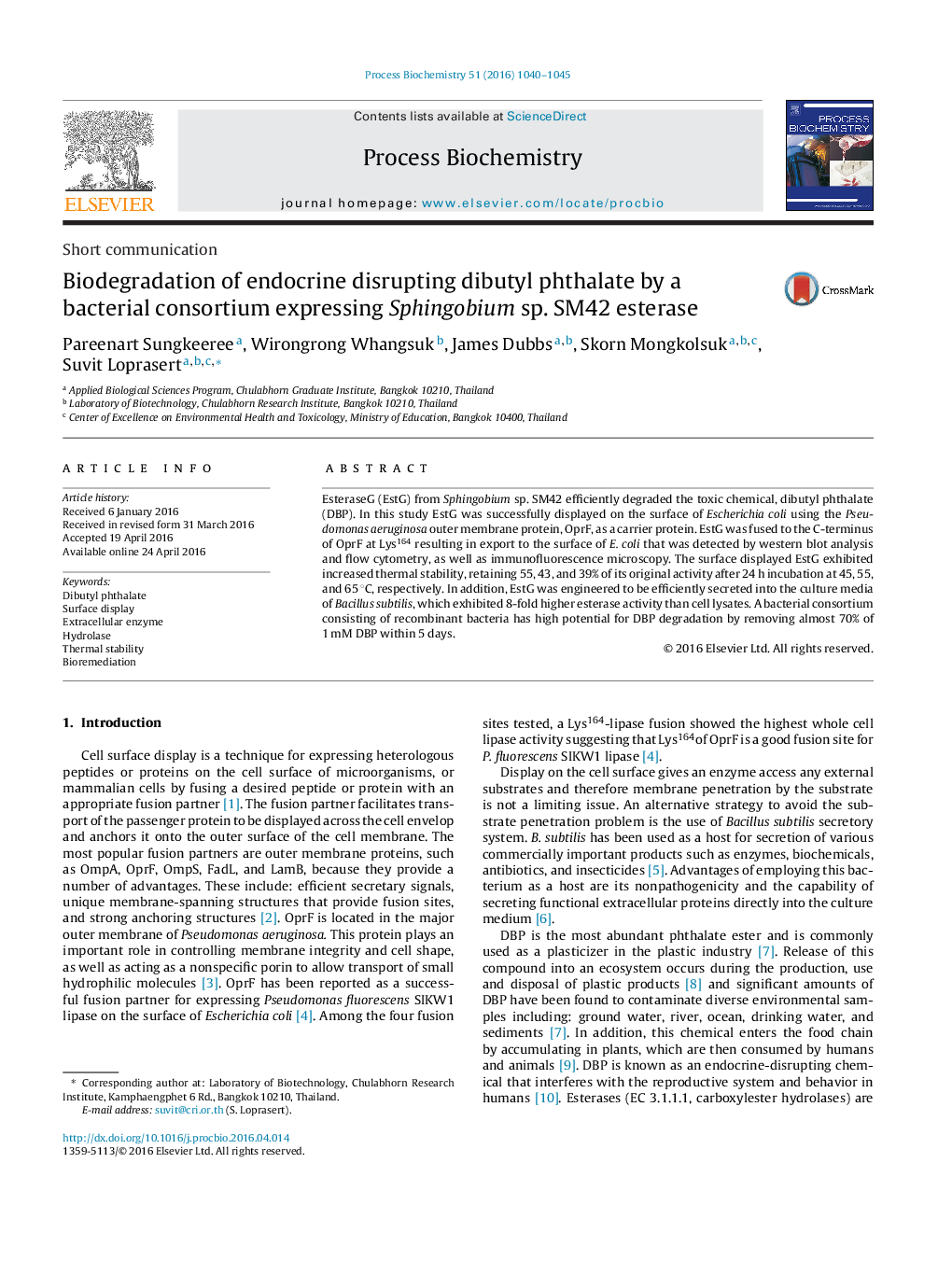| کد مقاله | کد نشریه | سال انتشار | مقاله انگلیسی | نسخه تمام متن |
|---|---|---|---|---|
| 34150 | 45005 | 2016 | 6 صفحه PDF | دانلود رایگان |
• EsteraseG was displayed on surface of E. coli using outer membrane protein, OprF.
• Surface expressed EstG exhibited increased thermal stability.
• EstG was also engineered to be efficiently secreted by B. subtilis.
• A recombinant bacterial consortium removes 70% of 1 mM DBP within 5 days.
EsteraseG (EstG) from Sphingobium sp. SM42 efficiently degraded the toxic chemical, dibutyl phthalate (DBP). In this study EstG was successfully displayed on the surface of Escherichia coli using the Pseudomonas aeruginosa outer membrane protein, OprF, as a carrier protein. EstG was fused to the C-terminus of OprF at Lys164 resulting in export to the surface of E. coli that was detected by western blot analysis and flow cytometry, as well as immunofluorescence microscopy. The surface displayed EstG exhibited increased thermal stability, retaining 55, 43, and 39% of its original activity after 24 h incubation at 45, 55, and 65 °C, respectively. In addition, EstG was engineered to be efficiently secreted into the culture media of Bacillus subtilis, which exhibited 8-fold higher esterase activity than cell lysates. A bacterial consortium consisting of recombinant bacteria has high potential for DBP degradation by removing almost 70% of 1 mM DBP within 5 days.
Figure optionsDownload as PowerPoint slide
Journal: Process Biochemistry - Volume 51, Issue 8, August 2016, Pages 1040–1045
